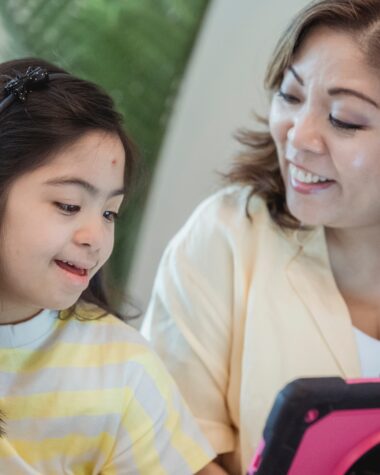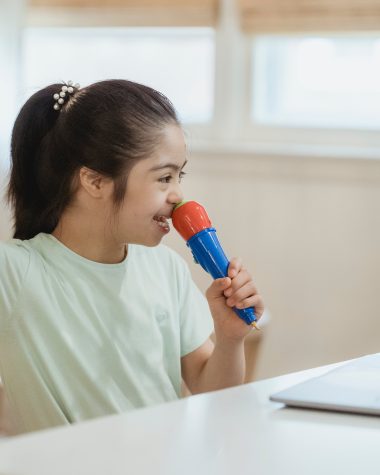As a parent, you want the best for your child. If your child has been diagnosed with autism spectrum disorder (ASD) or other developmental disabilities, Applied Behavior Analysis (ABA) therapy can be life-changing.
However, it’s not just about the hours spent in therapy sessions – incorporating ABA techniques into daily routines as a home therapy for autism can also make a big difference in your child’s progress and overall well-being. In this blog post, we’ll share some practical tips for parents to incorporate ABA therapy into their daily routines and help their children thrive.
Introduction to Applied Behavior Analysis (ABA) Therapy
Applied behavior analysis (ABA) therapy is a type of treatment that focuses on helping people with autism and other developmental disorders improve their ability to function in everyday life. ABA therapy can be used to help people with autism develop new skills, such as communication and social skills, and to learn how to better cope with difficult situations. ABA therapy is often used in combination with other treatments, such as speech therapy or occupational therapy.
ABA therapy is based on the principle that all behaviors are learned and can be changed. The goal of ABA therapy is to teach new skills and help people with autism make positive changes in their behavior.
ABA therapists use a variety of techniques to achieve these goals, including positive reinforcement, which rewards desired behaviors; negative reinforcement, which removes an unpleasant condition after a desired behavior is displayed; shaping, which involves gradually molding a desired behavior; and extinction, which involves stopping reinforcement for a behavior that is no longer desired.
ABA therapy can be delivered in a variety of settings, including at home, in the community, or in a clinic. ABA therapists work closely with parents or caregivers to develop individualized treatment plans that are based on the specific needs of the person with autism. Treatment plans may include goals for skill development, as well as strategies for dealing with challenging behaviors. ABA therapists also provide training and support for parents or caregivers so they can best help their child reach his or her full potential.
Benefits of ABA for Autistic Children
There are many benefits of ABA for autistic children. One of the most important benefits is that it can help reduce problem behaviors. ABA therapy can also help improve communication skills, social skills, and cognitive skills. Additionally, ABA therapy can help increase the motivation to learn new things and to follow instructions. Finally, ABA therapy can help reduce stress and anxiety levels in autistic children.
How Parents Can Incorporate ABA into their Daily Routines
ABA therapy is a type of therapy that can be used to help children with autism spectrum disorder (ASD) and other developmental disabilities. ABA therapy can be used in a variety of settings, including the home, school, and clinic. ABA therapy is based on the principles of Applied Behavior Analysis, which are the science of human behavior. The main goal of ABA therapy is to change behavior by using positive reinforcement.
- By using visual support: Visual supports are tools that can help children with ASD understand what is expected of them and stay on task. For example, parents can use a visual schedule to help their children know what activities need to be completed during the day. Visual support can also be used to teach new skills, such as how to brush your teeth or tie shoes.
- By using positive reinforcement: Positive reinforcement is a rewards-based system that encourages desired behaviors. For example, if a child completes a task or behaves in a desired manner, they may receive praise, a sticker, or a small toy as a reward. It is important to note that positive reinforcement should be used consistently in order for it to be effective.
- By teaching their child self-management skills. Self-management skills are those that enable children to take control of their own behavior and learn how to

Tips for Setting Up a Home Therapy for Autism
When it comes to ABA therapy, there is no one-size-fits-all approach. Every child is different and every family has different needs and preferences. However, there are some general tips that can be helpful when setting up an ABA program at home:
1. Create a positive and consistent environment. ABA therapy should be seen as a positive experience for both the child and the family. Creating a consistent routine and schedule can help make ABA sessions more predictable and enjoyable for everyone involved.
2. Make sure all materials are easily accessible. Having all of the necessary materials close at hand will make it easier to implement ABA techniques during everyday activities.
3. Utilize natural teaching opportunities. There are many opportunities throughout the day to teach new skills or reinforce existing ones. capitalize on these moments by incorporating ABA techniques into everyday activities such as mealtime, playtime, and bedtime routines.
4. Be patient and flexible. It takes time to see results from ABA therapy, so it is important to be patient and flexible in your approach. Be prepared to adjust your goals and methods as you learn what works best for your child.
Challenges to Implementing an ABA Program
There are a number of challenges that can arise when implementing an ABA program.
- One common challenge is finding a qualified therapist. ABA programs require a high level of training and experience, so it is important to find a therapist who has both.
- Another challenge is making sure that the program is tailored to the individual child’s needs. Every child is different, so it is important to find an ABA program that can be customized to meet the specific needs of the child.
- Finally, another challenge that can arise is maintaining consistency with the program. ABA programs require a high level of commitment from both the parents and the child in order to be successful.
Resources Available to Parents
There are a number of resources available to parents who want to incorporate Applied Behavior Analysis (ABA) therapy into their daily routines. ABA therapists can provide parents with guidance and support in developing a plan that is tailored to their child’s individual needs. In addition, there are a number of online resources that provide information and support for parents navigating the world of ABA therapy. Below are some suggested resources for parents interested in learning more about ABA:
-The Association for Behavior Analysis International (ABAI) website provides a wealth of information on Applied Behavior Analysis, including what it is, how it can be used, and research supporting its efficacy.
-The Autism Speaks website offers guidance and support for parents dealing with autism spectrum disorder, including information on ABA therapy and other interventions.
-Behaviorbabe.com is a blog written by an experienced ABA therapist that provides tips and tricks for incorporating ABA into everyday life with kids.
-The National Autism Center’s National Standards Report is a comprehensive resource on evidence-based interventions for autism spectrum disorder, of which ABA is one.
Also, Read About: Amazing Tips For Parents Raising A Child With Autism
Conclusion
Applied behavior analysis (ABA) therapy is an effective and beneficial form of therapeutic intervention for people with an autism spectrum disorder. We hope this article has given parents the information they need to incorporate ABA into their daily routines. With patience, dedication, and consistency in applying these tips, parents can help their children get the most out of ABA therapy. Remember that your child’s success relies on your determination and commitment to helping them reach their goals!







